
Tartu: The Heartbeat of Estonian Culture and Education
Explore Tartu, Estonia's intellectual heart, where history, culture, and youthful energy converge in a charming blend of old and new.
Tartu, Estonia's second-largest city, is a vibrant blend of history, culture, and youthful energy. It's known as the intellectual capital of Estonia, home to the nation's oldest and most prestigious university, the University of Tartu. The university's presence gives the city a lively, youthful atmosphere with a calendar filled with academic events, festivals, and cultural happenings. Walking through Tartu, you'll find a delightful mix of old and new. The charming Old Town boasts cobblestone streets, historical buildings, and cozy cafes. The Town Hall Square, with its iconic Kissing Students fountain, is a great starting point for exploring. Don't miss the Tartu Art Museum and the 13th-century Tartu Cathedral ruins on Toome Hill, offering panoramic views of the city. Tartu is also a city of innovation and creativity. The AHHA Science Centre is a must-visit for families, offering interactive exhibits and a planetarium. The city's burgeoning startup scene adds a modern twist to its historical roots. Whether you're interested in history, culture, or modern attractions, Tartu has something for everyone.
Local tips in Tartu
- Visit the University of Tartu Museum for a deeper understanding of the city's academic heritage.
- Take a stroll in Toome Hill Park for a peaceful escape and breathtaking views.
- Try the local cuisine at the many cafes and restaurants in the Old Town.
- Check the event calendar for festivals and cultural events during your visit.
- Use the city bikes for an eco-friendly way to explore Tartu.
Tartu: The Heartbeat of Estonian Culture and Education
Tartu, Estonia's second-largest city, is a vibrant blend of history, culture, and youthful energy. It's known as the intellectual capital of Estonia, home to the nation's oldest and most prestigious university, the University of Tartu. The university's presence gives the city a lively, youthful atmosphere with a calendar filled with academic events, festivals, and cultural happenings. Walking through Tartu, you'll find a delightful mix of old and new. The charming Old Town boasts cobblestone streets, historical buildings, and cozy cafes. The Town Hall Square, with its iconic Kissing Students fountain, is a great starting point for exploring. Don't miss the Tartu Art Museum and the 13th-century Tartu Cathedral ruins on Toome Hill, offering panoramic views of the city. Tartu is also a city of innovation and creativity. The AHHA Science Centre is a must-visit for families, offering interactive exhibits and a planetarium. The city's burgeoning startup scene adds a modern twist to its historical roots. Whether you're interested in history, culture, or modern attractions, Tartu has something for everyone.
When is the best time to go to Tartu?
Iconic landmarks you can’t miss
Tagurpidi Maja (Peapeal OÜ)
Experience the whimsical Tagurpidi Maja in Tartu, Estonia, where everything is upside down, offering a playful and unique perspective for all visitors.

Town Hall Square
Explore the historic Town Hall Square in Tartu, a vibrant cultural hub with stunning architecture, lively events, and charming cafes.

Ruins of Tartu Cathedral
Explore the enchanting Ruins of Tartu Cathedral, a historical landmark steeped in rich heritage and captivating architecture in Tartu, Estonia.

Cathedral Hill Park
Experience the lush beauty and serene views of Cathedral Hill Park, a tranquil escape in the heart of Tartu, Estonia.

Tartu Tähetorn
Explore the cosmos like never before at Tartu Tähetorn, an interactive museum where the wonders of astronomy come alive.

Kalevipoeg – War of Independence Monument / Tartu Vabadussõja mälestussammas
Explore the Kalevipoeg War of Independence Monument in Tartu, a historical landmark celebrating Estonia's resilience and fight for freedom.

Kristjan Jaak Petersoni mälestusmärk / Monument to Kristjan Jaak Peterson
Explore the Monument to Kristjan Jaak Peterson in Tartu, a historical landmark celebrating Estonia's literary heritage amidst beautiful natural surroundings.

Johan Skytte monument
Discover Tartu's rich heritage at the Johan Skytte Monument, an iconic tribute to history and culture in Estonia's charming city.

Karl Ernst von Baeri Monument
Explore the Karl Ernst von Baeri Monument in Tartu, a historical landmark celebrating the legacy of Estonia's pioneering naturalist in a serene setting.

VR Tartu 1913 (VR History)
Immerse yourself in Tartu's rich history with VR Tartu 1913, a unique virtual reality experience that transports you back to the city's vibrant past.
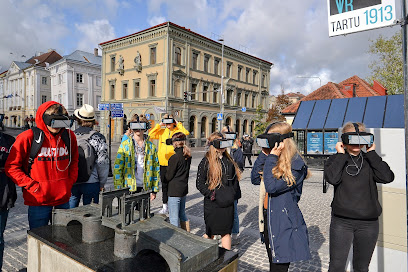
Monument to Gustav II Adolf
Discover the historic Monument to Gustav II Adolf in Tartu, a stunning sculpture honoring the Swedish king and a must-visit cultural landmark.

Willem Reimani monument / Monument to Villem Reiman
Explore the Willem Reimani Monument in Tartu, a historical landmark celebrating Estonian heritage amidst beautiful park scenery.
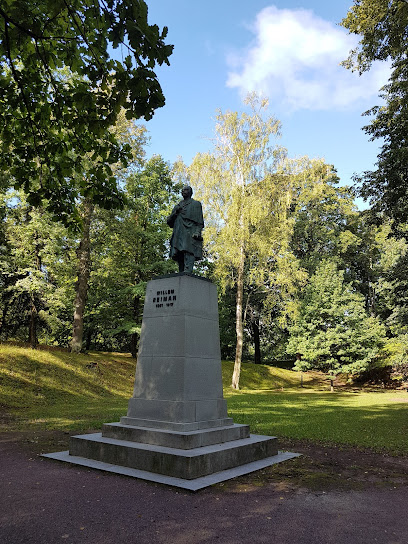
Monument of Nations
Explore the Monument of Nations in Tartu, a stunning tribute to unity and cultural diversity set in a serene park, perfect for reflection and relaxation.

Friedrich Georg Wilhelm Struve monument
Explore the Friedrich Georg Wilhelm Struve monument in Tartu, a historical landmark celebrating the legacy of a pioneering astronomer.
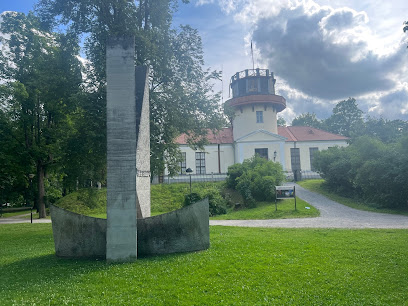
Monument to Ernst von Bergmann
Explore the historic Monument to Ernst von Bergmann in Tartu, a tribute to medical advancements and a serene spot for reflection in Estonia's cultural hub.

Unmissable attractions to see
AHHAA Science Centre
Explore the AHHAA Science Centre in Tartu, Estonia - an interactive museum full of engaging exhibits and fun for the whole family.

Estonian National Museum
Explore the Estonian National Museum in Tartu - a treasure trove of cultural heritage and history, showcasing Estonia's rich past through engaging exhibits.

Tagurpidi Maja (Peapeal OÜ)
Discover the enchanting Tagurpidi Maja in Tartu, an upside-down house that challenges your perception with its unique architecture and fun exhibits.
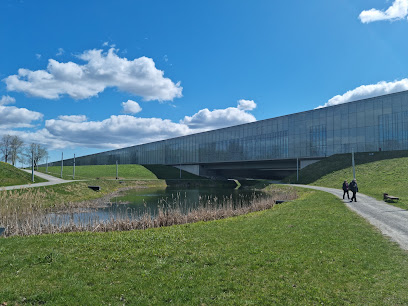
Town Hall Square
Experience the vibrant heart of Tartu at Town Hall Square, a historical hub filled with culture, architecture, and lively local events.

Aura Waterpark
Experience unforgettable fun and relaxation at Aura Waterpark, Tartu's premier indoor water attraction featuring slides, pools, and wellness amenities.

Tartu Mänguasjamuuseum / Tartu Toy Museum
Explore the enchanting Tartu Toy Museum, a whimsical journey through the history of play and creativity for visitors of all ages.

University of Tartu
Discover the rich history and vibrant academic culture at the University of Tartu, Estonia's oldest university and a center of excellence in education.
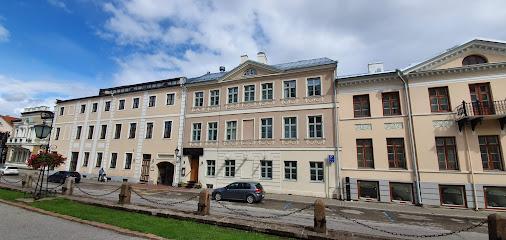
Cathedral Hill Park
Experience the beauty and serenity of Cathedral Hill Park, a perfect blend of nature and history in Tartu, Estonia.

University of Tartu Museum
Discover the University of Tartu Museum, a trove of history and culture in Estonia's academic heart, perfect for tourists seeking knowledge and inspiration.

Eesti Spordi- ja Olümpiamuuseum
Explore Estonia's sports heritage at the Eesti Spordi- ja Olümpiamuuseum in Tartu, where history meets interactive experiences for all ages.

Skulptuur Suudlevad tudengid / 'The Kissing Students' sculpture and fountain
Explore the Kissing Students sculpture and fountain in Tartu, a romantic symbol of student life and a vibrant tourist attraction in Estonia's cultural heart.
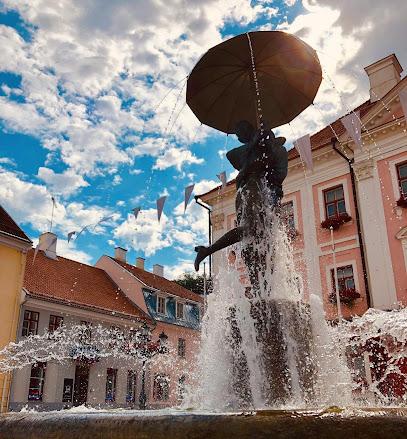
KGB Cells Museum
Discover the KGB Cells Museum in Tartu, a haunting yet essential exploration of Estonia's Soviet history and the fight for freedom.

University of Tartu, Museum of Natural History
Explore the natural world at the University of Tartu Museum of Natural History, a captivating destination for nature enthusiasts and curious travelers alike.
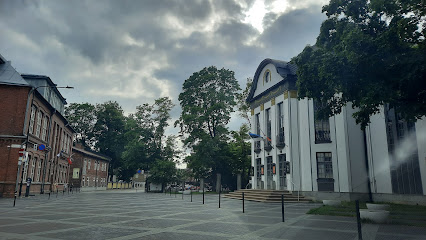
Laulupeomuuseum
Discover the Laulupeomuuseum in Tartu, where Estonia's rich choral heritage comes alive through engaging exhibits and immersive experiences.

Kissing Hill
Discover the romantic allure of Kissing Hill, Tartu's picturesque landmark, offering stunning views and a serene escape in the heart of Estonia.

Essential places to dine
Gunpowder Cellar of Tartu
Discover Tartu's rich culinary heritage at the historic Gunpowder Cellar – where tradition meets taste.

La Dolce Vita
Experience the essence of Italian cuisine at La Dolce Vita in Tartu - where every meal is a celebration.

Pahad Poisid
Discover Pahad Poisid: A lively Irish pub in Tartu offering hearty meals, refreshing drinks, and vibrant entertainment.

Cafe-restaurant Werner
Experience the flavors of Tartu at Café-Restaurant Werner - where delicious breakfasts meet cozy ambiance.
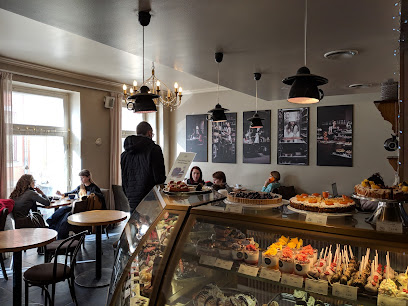
Restoran Aparaat
Experience the flavors of Estonia at Restoran Aparaat in Tartu – where local ingredients meet culinary creativity in an inviting atmosphere.

Vapiano Tartu
Discover the authentic taste of Italy at Vapiano Tartu, where fresh ingredients meet traditional recipes in a welcoming atmosphere.

Kolm Tilli
Experience authentic Estonian cuisine with international flair at Kolm Tilli in Tartu – your gateway to delightful dining!

Hansa Tall & Hansa Hoov
Discover the rich flavors and vibrant atmosphere at Hansa Tall & Hansa Hoov in Tartu - where Estonian traditions meet modern dining.
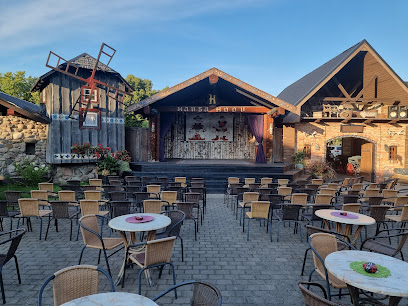
Pubi RP 9
Experience authentic Estonian cuisine at Pubi RP 9 in Tartu – where every meal tells a story.
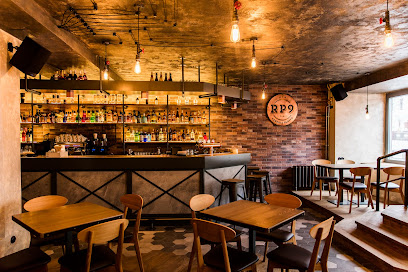
Restaurant München - Weihenstephaner Wirtshaus
Savor traditional German cuisine and vibrant beer hall vibes at Restaurant München in Tartu – a culinary journey awaits!

Crepp
Experience the flavors of Tartu at Crepp - where delightful crepes meet cozy ambiance in the heart of Estonia.

Taverna Pizzeria
Experience the best of Estonian cuisine at Taverna Pizzeria in Tartu – where authentic flavors meet warm hospitality.

Gustav Gastro Cafe
Discover the flavors of Estonia at Gustav Gastro Cafe in Tartu – where local ingredients meet innovative cuisine in a cozy setting.

Vilde Ja Vine
Experience exceptional Estonian cuisine and fine wines at Vilde Ja Vine, Tartu's top culinary destination.

Truffe
Experience exquisite cuisine at Truffe in Tartu – where local flavors meet international culinary artistry.

Markets, malls and hidden boutiques
Lõunakeskus
Experience shopping, dining, and fun all in one place at Lõunakeskus, Tartu's top shopping mall featuring diverse stores, ice skating, and free Wi-Fi.

Tartu Kaubamaja
Explore Tartu Kaubamaja, the vibrant shopping mall in Tartu, offering a mix of international brands, local boutiques, dining, and entertainment for all!

Tasku Centre
Discover the essence of shopping at Tasku Centre, Tartu's vibrant mall filled with diverse shops, delightful dining, and family-friendly entertainment.

Kvartal
Explore Kvartal in Tartu for a fantastic shopping experience with diverse stores and delightful dining options.

Eeden Shopping Mall
Explore Eeden Shopping Mall in Tartu for a unique blend of shopping, dining, and entertainment in a vibrant atmosphere.

Zeppelin
Discover shopping, dining, and entertainment at Zeppelin, Tartu's vibrant shopping mall that offers a local cultural experience.

Tartu Rahva Raamat
Explore the Literary Treasures of Tartu Rahva Raamat, a Bookstore Where Stories Come to Life in the Heart of Estonia.

Jõe Keskus
Explore Jõe Keskus in Tartu for exceptional outdoor furniture and a diverse range of household goods, perfect for every style and need.

Tartu Kaubamaja Toidumaailm
Explore Tartu Kaubamaja Toidumaailm for a delightful selection of local and international food items in the heart of Tartu.

Sisustus E Kaubamaja
Explore Sisustus E Kaubamaja: A vibrant shopping destination in Tartu, offering unique stores, delightful dining, and a cozy atmosphere.

Tartu Uuskasutuskeskus
Explore Tartu Uuskasutuskeskus for an eclectic mix of second-hand treasures, from used books to vintage clothing, all in support of sustainability.

Humana vintage
Explore the charm of second-hand fashion at Humana Vintage in Tartu, where every piece has a story and style awaits discovery.

Weekend Jalatsipood
Explore Tartu's finest shoe store, Weekend Jalatsipood, featuring an extensive selection of stylish footwear for every occasion.

NEW YORKER
Explore the latest trends and unique fashion pieces at NEW YORKER, Tartu's premier clothing store for style-savvy shoppers.

Apollo
Discover Tartu's vibrant literary scene at Apollo Bookstore, a haven for book lovers with a vast selection and inviting atmosphere.

Essential bars & hidden hideouts
Gunpowder Cellar of Tartu
Experience Tartu's rich history and vibrant culinary scene at the Gunpowder Cellar, a unique restaurant and pub offering local flavors and a cozy atmosphere.
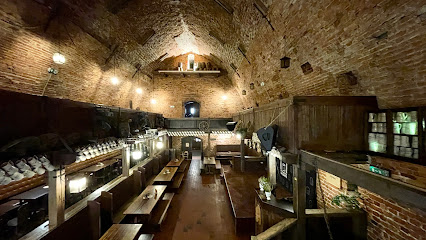
Pahad Poisid
Discover Pahad Poisid, Tartu's iconic Irish pub offering a warm atmosphere, delicious food, and an impressive drink menu for a memorable experience.
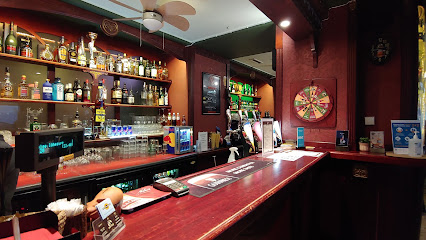
Pubi RP 9
Discover the vibrant culinary scene of Tartu at Pubi RP 9, where local flavors meet a lively atmosphere in a historic setting.

Ränduri pub
Experience the vibrant essence of Tartu at Ränduri Pub, where unique design meets delightful Estonian flavors in a cozy atmosphere.

Illegaard
Discover Illegaard in Tartu: a lively pub offering local flavors, an impressive drink selection, and a warm atmosphere perfect for socializing.

Väike Kuuba Mojito Baar
Experience Tartu's nightlife at Väike Kuuba Mojito Baar, where refreshing mojitos and a vibrant atmosphere await you.

The Irish Embassy Pub Tartu
Discover the lively ambiance of The Irish Embassy Pub in Tartu, where traditional Irish flavors meet a vibrant social scene.

Beckeri Pub
Discover Beckeri Pub in Tartu – a charming bar and cafe offering a delightful selection of drinks and an inviting atmosphere for all.
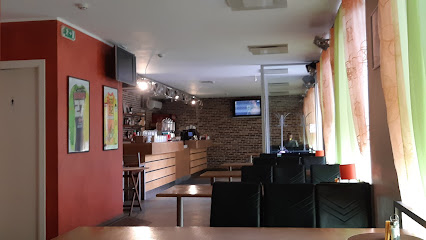
Pühaste Kelder
Experience the vibrant nightlife of Tartu at Pühaste Kelder, where craft beers and local spirits await in a cozy and inviting atmosphere.

Wine and Vine
Discover the essence of Tartu at Wine and Vine, where exquisite wines meet a cozy atmosphere for a perfect evening out.

Willy&Rudy
Discover the vibrant nightlife of Tartu at Willy&Rudy, where exceptional drinks meet a lively atmosphere in the heart of the city.

Trepp
Experience Tartu's nightlife at Trepp, a lively bar with a diverse drink selection and a welcoming atmosphere for locals and tourists alike.

Klubi Rock & Roll
Immerse yourself in Tartu's vibrant live music culture at Klubi Rock & Roll, where unforgettable performances meet an energetic atmosphere.

Satiir
Experience the vibrant nightlife of Tartu at Satiir, where signature cocktails and lively entertainment await every night.

Space Bar
Discover Tartu's nightlife at Space Bar, a cocktail haven for enthusiasts and a vibrant meeting spot for locals and tourists alike.

Local Phrases
-
- HelloTere
[te-reh] - GoodbyeNägemist
[nah-geh-mist] - YesJah
[yah] - NoEi
[ay] - Please/You're welcomePalun
[pah-loon] - Thank youAitäh
[eye-tah] - Excuse me/SorryVabandage
[vah-bahn-da-geh] - How are you?Kuidas sul läheb?
[kwee-das sool lah-heb] - Fine. And you?Hästi. Ja sina?
[ha-stee yah see-nah] - Do you speak English?Kas te räägite inglise keelt?
[kahs teh rah-gee-teh eeng-lee-seh kehlt] - I don't understandMa ei saa aru
[mah ay sah ah-roo]
- HelloTere
-
- I'd like to see the menu, pleaseMa sooviksin menüüd näha, palun
[mah soh-veek-seen meh-noo-ood nah-ha pah-loon] - I don't eat meatMa ei söö liha
[mah ay suh lhee-hah] - Cheers!Terviseks!
[ter-vee-sehks] - I would like to pay, pleaseMa sooviksin maksta, palun
[mah soh-veek-seen mahk-stah pah-loon]
- I'd like to see the menu, pleaseMa sooviksin menüüd näha, palun
-
- Help!Appi!
[ahp-pee] - Go away!Mine minema!
[mee-neh mee-neh-mah] - Call the Police!Helista politseile!
[heh-lees-tah poh-leet-seh-ee-leh] - Call a doctor!Helista arstile!
[heh-lees-tah ahr-stee-leh] - I'm lostMa olen eksinud
[mah oh-lehn ehk-see-noo-d] - I'm illMa olen haige
[mah oh-lehn hah-ee-geh]
- Help!Appi!
-
- I'd like to buy...Ma tahaksin osta...
[mah tah-hahk-seen oh-stah] - I'm just lookingMa vaatan lihtsalt
[mah vah-tahn leekh-tsalt] - How much is it?Kui palju see maksab?
[kwee pahl-yoo seh mahk-sahb] - That's too expensiveSee on liiga kallis
[seh ohn lee-gah kah-lees] - Can you lower the price?Kas saate hinda alandada?
[kahs sah-teh hin-dah ah-lahn-dah-dah]
- I'd like to buy...Ma tahaksin osta...
-
- What time is it?Mis kell on?
[mees kell ohn] - It's one o'clockOn üks
[ohn uks] - Half past (10)Pool (kümme)
[pool koom-meh] - MorningHommik
[hohm-meek] - AfternoonPäev
[payv] - EveningÕhtu
[ooh-tuh] - YesterdayEile
[ay-leh] - TodayTäna
[tah-nah] - TomorrowHomme
[hohm-meh] - 1Üks
[uks] - 2Kaks
[kahks] - 3Kolm
[kohlm] - 4Neli
[neh-lee] - 5Viis
[vee-ees] - 6Kuus
[koos] - 7Seitse
[sayt-seh] - 8Kaheksa
[kah-hek-sah] - 9Üheksa
[u-hek-sah] - 10Kümme
[koom-meh]
- What time is it?Mis kell on?
-
- Where's a/the...?Kus on...
[koos ohn] - What's the address?Mis on aadress?
[mees ohn ah-ah-drehss] - Can you show me (on the map)?Kas saate mulle näidata (kaardil)?
[kahs sah-teh moo-leh nah-ee-tah-dah kaar-deel] - When's the next (bus)?Millal on järgmine (buss)?
[meel-lahl ohn yair-gmee-neh boos] - A ticket (to ....)Pilet (....)
[pee-leht]
- Where's a/the...?Kus on...
History of Tartu
-
Tartu, one of the oldest cities in Estonia, was first mentioned as Tarbatu in 1030. This settlement was established by the Kievan Rus' and later became an important trading post in the region. The town saw various rulers, including Danes, Germans, and Russians, due to its strategic location.
-
In the Middle Ages, Tartu became a member of the Hanseatic League, a powerful commercial and defensive confederation of merchant guilds and market towns in Northwestern and Central Europe. This affiliation boosted Tartu's economic and political importance, making it a key player in regional trade.
-
Founded in 1632 by the Swedish King Gustavus Adolphus, the University of Tartu is one of the oldest universities in Northern Europe. It has been a center of academic excellence and intellectual growth, producing many notable scholars and contributing significantly to the cultural and scientific landscape of Estonia.
-
The Livonian War (1558-1583) had a profound impact on Tartu. The city was repeatedly attacked and changed hands several times between the Russians, Poles, and Swedes. This period was marked by significant destruction and rebuilding, shaping the city's architecture and fortifications.
-
Under Russian rule in the 18th and 19th centuries, Tartu experienced a cultural renaissance. The city became a hub for Estonian nationalism and the Estonian Age of Awakening, with the University of Tartu playing a crucial role in fostering national identity and intellectual progress.
-
In 1775, a devastating fire swept through Tartu, destroying a large portion of the city. The reconstruction efforts that followed introduced new architectural styles and urban planning concepts, significantly altering the city's layout and appearance.
-
The 20th century was a turbulent time for Tartu, marked by both World Wars and Soviet occupation. Despite these challenges, Tartu remained a center of education and culture. The city played a vital role in Estonia's struggle for independence, with many significant events and movements originating here.
-
Today, Tartu is known as the intellectual and cultural heart of Estonia. It boasts numerous museums, theaters, and festivals, reflecting its rich history and vibrant cultural scene. The city's blend of historical and modern influences makes it a unique and dynamic place to visit.
Tartu Essentials
-
Tartu is located in southeastern Estonia, approximately 186 kilometers from the capital, Tallinn. The nearest international airport is Lennart Meri Tallinn Airport. From Tallinn, you can take a bus or train to Tartu, with the journey typically taking around 2.5 to 3 hours. Buses and trains run frequently and offer a comfortable ride. Alternatively, you can rent a car and drive, enjoying the scenic Estonian countryside.
-
Tartu has an efficient public transportation system, primarily consisting of buses. Tickets can be purchased from the driver or via mobile apps. Taxis and ride-sharing services like Bolt are also available. The city is bike-friendly, with several rental options and dedicated bike lanes. Walking is another excellent way to explore the city, particularly the central areas and the Old Town.
-
The official currency in Estonia is the Euro (EUR). Credit cards are widely accepted in most establishments, including hotels, restaurants, and shops. ATMs are readily available throughout Tartu. It's advisable to carry some cash for smaller purchases or in case you visit more remote areas where card payments may not be accepted.
-
Tartu is generally a safe city for tourists. However, as with any travel destination, it is wise to take standard precautions. Avoid walking alone at night in unfamiliar areas and keep an eye on your belongings in crowded places. The city does not have specific high-crime areas targeting tourists, but staying vigilant is always a good practice.
-
In case of emergency, dial 112 for immediate assistance, which connects you to police, fire, or medical services. Tartu University Hospital is the primary medical facility in the city and is well-equipped to handle emergencies. Pharmacies are also available for minor health issues. It is recommended to have travel insurance that covers medical emergencies.
-
Fashion: Do dress smart-casual when dining out or attending cultural events. Avoid overly casual attire in more formal settings. Religion: Do respect local customs and traditions, particularly in churches. Dress modestly and remain quiet when visiting religious sites. Public Transport: Do give up your seat to elderly passengers and keep conversations at a low volume. Don't eat or drink on public transport. Greetings: Do greet people with a handshake. A friendly 'Tere' (Hello) is also appreciated. Eating & Drinking: Do try local foods and drinks, such as kama, kiluvõileib, and local beers. Don't tip excessively; a small tip or rounding up the bill is sufficient.
-
To experience Tartu like a local, visit the Tartu Market Hall for fresh produce and local specialties. Explore the vibrant student culture by visiting university cafés and attending public lectures or events. Take a stroll along the Emajõgi River and enjoy the scenic parks, such as Toome Hill. Don't miss the Aparaaditehas, a creative city quarter with art studios, shops, and eateries. Engage with locals; they are generally friendly and willing to share insights about the city's history and culture.
Trending Landmark in Tartu
-
Tagurpidi Maja (Peapeal OÜ)
-
Town Hall Square
-
Ruins of Tartu Cathedral
-
Cathedral Hill Park
-
Tartu Tähetorn
-
Kalevipoeg – War of Independence Monument / Tartu Vabadussõja mälestussammas
-
Kristjan Jaak Petersoni mälestusmärk / Monument to Kristjan Jaak Peterson
-
Johan Skytte monument
-
Karl Ernst von Baeri Monument
-
VR Tartu 1913 (VR History)
-
Monument to Gustav II Adolf
-
Willem Reimani monument / Monument to Villem Reiman
-
Monument of Nations
-
Friedrich Georg Wilhelm Struve monument
-
Monument to Ernst von Bergmann
Nearby Cities to Tartu
-
Things To Do in Võru
-
Things To Do in Viljandi
-
Things To Do in Valga
-
Things To Do in Paide
-
Things To Do in Rakvere
-
Things To Do in Jõhvi
-
Things To Do in Pärnu
-
Things To Do in Rapla
-
Things To Do in Cesis
-
Things To Do in Tallinn
-
Things To Do in Sigulda
-
Things To Do in Haapsalu
-
Things To Do in Riga
-
Things To Do in Helsinki
-
Things To Do in Porvoo













